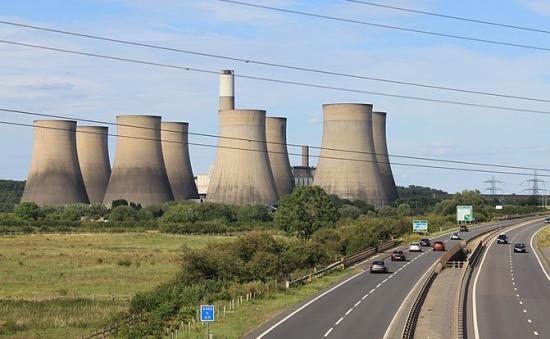UK Oil And Gas Workers Risk Becoming The Coal Miners Of Our Generation
25th September 2024

At the end of September, the UK's last remaining coal power plant, Ratcliffe-on-Soar in Nottinghamshire, will be retired. The closure of the plant should - and will - be celebrated by environmentalists, as the move away from coal has made Britain's electricity much cleaner over the past decade. It is on this basis that the UK claims climate leadership.
In the 1950s, coal provided the overwhelming majority of British energy, and as recently as 2012 it still generated 40%. By 2022, it was less than 2%. In a month's time, it will be zero.
Phasing out coal was a brutal and profound process. Organised labour was decimated, entire regions were forced into decline, and communities were left with sustained economic, social and health problems. The towering ghosts of power stations like Ratcliffe-on-Soar will haunt Britain's ongoing effort to phase out North Sea oil and gas and replace it with clean energy.
And we are witnessing this haunting in real-time. After the Labour government announced its plans to end new licenses for oil and gas in British waters - necessary to meet the Paris Agreement - workers and trade unions feared history would repeat itself in terms of job losses and blighted communities.
The general secretary of Unite, Sharon Graham, noted that without a more thorough plan, the policy risked creating "the coal miners of our generation". A recent motion at the Trades Union Congress (TUC) gathering in Brighton called for no ban on oil and gas licensing before a fully funded jobs guarantee is agreed. The motion narrowly passed.
Workers and unions are demanding a "just transition" from polluting industries into the clean industries of the future. But to achieve this, the UK government must learn from what happened with coal.
Many places still rely on oil and gas jobs
Although oil and gas are not as embedded throughout British life as coal once was, there are many settlements and larger areas still dependent on energy jobs. Grangemouth in central Scotland is a good example. In November 2023, the owner, Petroineos, announced plans to close the town's oil refinery in 2025, bringing a century of production to an end at the cost of 400 jobs.
Even if the UK government did issue new oil and gas licences, the North Sea faces structural decline. Production peaked around the turn of the century. Since 2014, as many as 200,000 jobs have been lost either offshore or along the supply chain onshore.
From gas to wind?
Planning for the end of fossil fuels is therefore an urgent endeavour. The dominant strategy for protecting skilled jobs is to transition workers into the industries set to replace North Sea production: wind energy and other low-carbon technologies.
However, though Britain has developed a large wind power sector, it remains a major importer of turbines. Domestic manufacturing makes only a small contribution, and developers are not required to use British-made turbines or other parts, despite the jobs this would create.
This has left Grangemouth workers discontented. When one of us (Ewan Gibbs) and Riyoko Shibe interviewed young refinery workers at Grangemouth earlier this year, many commented that there were relatively few jobs in renewables. When jobs were visible on LinkedIn and comparable job sites, one told us that "you'll see there's a big difference in terms and conditions".
In its current form, the UK wind industry will find it hard to provide the types of secure ongoing employment that oil and gas historically has. Most jobs are in the construction and maintenance of wind farms, with the latter threatened by automation. Without public investment and a targeted industrial policy, Britain will remain a net importer of wind technology, and the phasing out of North Sea oil and gas will prove costly in job terms.
Authors
Freddie Daley
Research Associate, Centre for Global Political Economy, University of Sussex
Ewan Gibbs
Lecturer in Global Inequalities, University of Glasgow
Note
This article is from The Conversation web site. To read it with links to more information and photos go HERE
PHOTO
Ratcliffe-on-Soar Power Station situated next to the A453
Wikipedia
